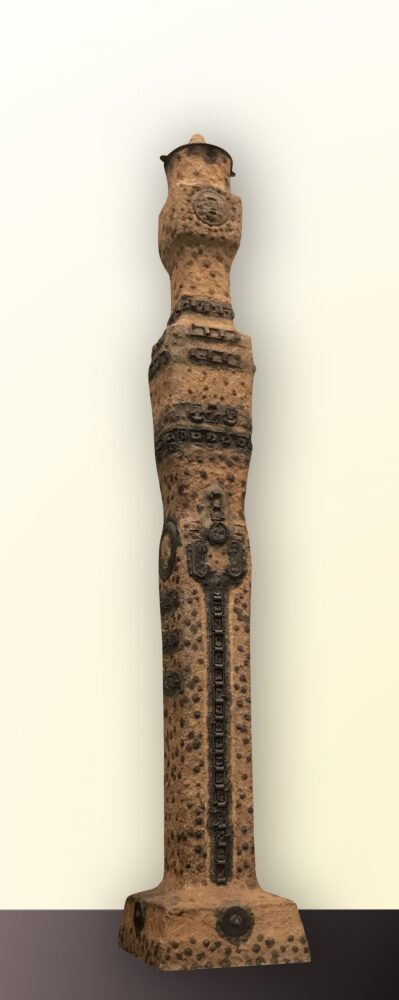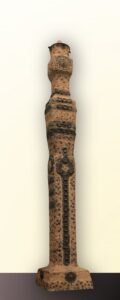Looking Past Privilege
The art of Clyde Connell
Published: November 29, 2020
Last Updated: February 28, 2021

Photo by Nancy Noles
Clyde Connell, Guardian Post III, 1976. Mixed media.
Against societal norms, she began teaching Bible school in the Black community of Caddo Prairie. Years later, when her husband served as superintendent of the Caddo Parish Penal Farm, she painted many portraits for inmates and learned their stories. Vivid memories of the guttural sounds of her childhood nurse mourning over lynchings as well as African American mourning songs and chants sung collectively by inmates at the prison made a significant impression upon her.
While living at the penal farm, Connell finally had her own studio and was active in the liberal Presbyterian church of the 1950s. When she was appointed to a National Council of Churches, she began to attend meetings in New York City twice a year. There she met many authors and artists through her “churchnik” friends living in SoHo alongside the beatniks. She was fascinated by this very different world and spent much of her time visiting galleries. The Abstract Expressionists particularly captured her interest. These trips provided the opportunity to have the freedom she desired, while still immersed in her role of wife and mother in Louisiana.
Connell grew weary of the conservatism of local cultural arts groups and with a small group of progressive artists started the Shreveport Contemporary Art Group. Abstraction was then considered subversive, but they succeeded in mounting the first exhibit of abstract art in the region. Soon, the group was exhibiting in Baton Rouge and Alexandria also.
Connell’s family had lost most of their property during the Depression and after her husband lost his job, they moved to a family cabin on Lake Bistineau. This ended the upper-class life that she had led but began her journey to create the most important works of her career. It was here that she grappled with the social inequities and the healing embrace of nature that inform her work.
The Alexandria Museum of Art is open under social distancing guidelines. Find out more at themuseum.org.
